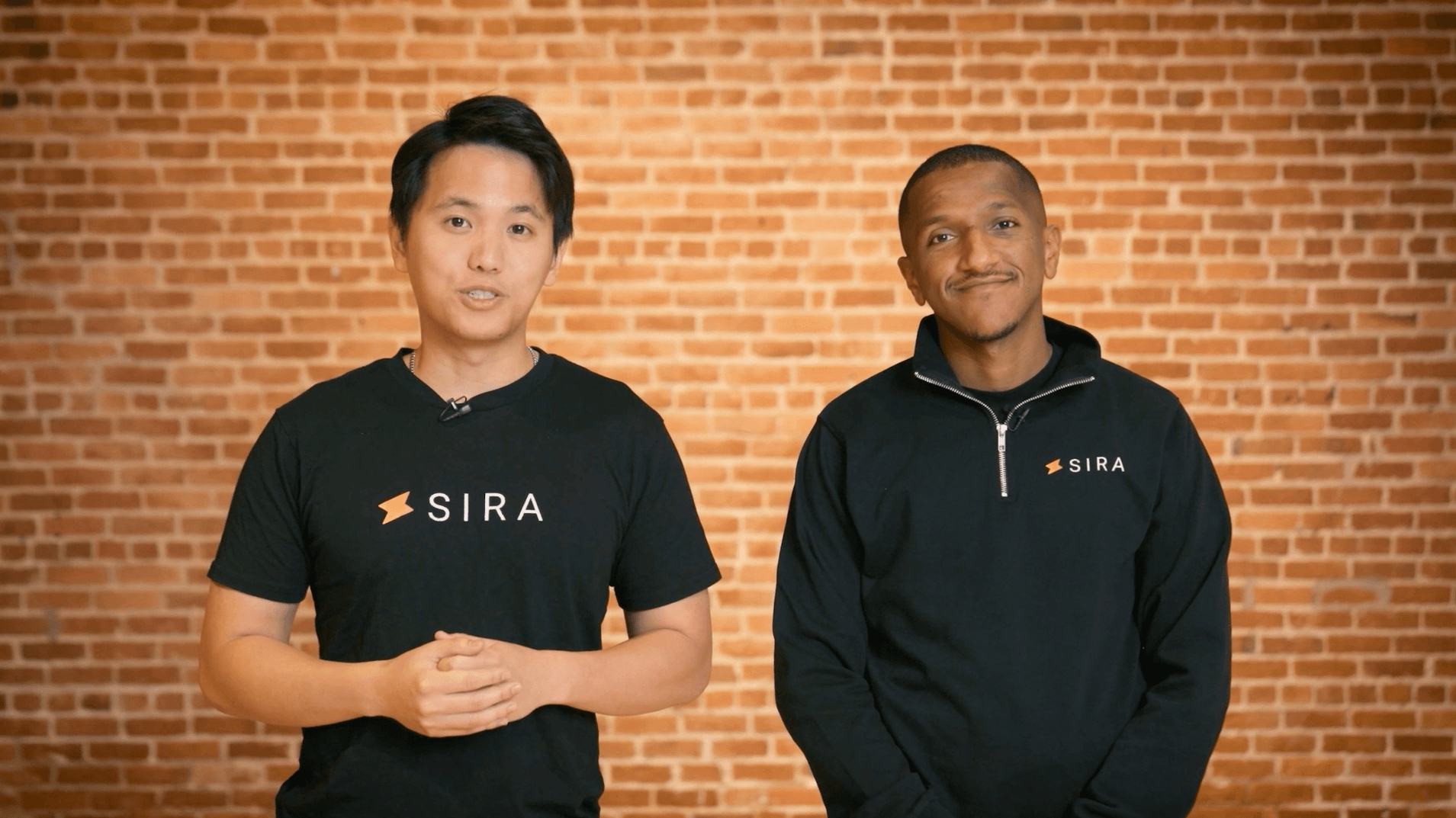5 Stats Shaping My Investment Theses in 2023

A surprising statistic is often the kernel of an investment thesis. It launches a journey of research, trying to understand what’s behind the numbers and where technology-enabled services may be able to improve the current reality.
For example, a stat that dyslexic lower-income kids were, on average, diagnosed 3 to 4 years later than higher-income peers, led to our investment in EarlyBird, a dyslexia screener for young children used in schools and homes. The earlier the diagnoses, the better the chances of preventing self-confidence challenges down the road.
Because we are investing for the future — what the world will be like in 5, 10, 15 years — data is one of the most important signals for macro level trends. It’s why Mary Meeker’s Internet Trends deck is so popular. School data can be hard to find; it’s often buried in local school board decks or government databases. Even so, I love to pour over data sets, particularly research from ERIC, NCES and others I can get my hands on.
Below are five stats currently on my mind that shape how I think about investing for 2023. I’ve kept investment specifics intentionally vague because although we understand the problems well, it’s the founders who are generating the breakthrough technological ideas. Our job as investors is not to dictate solutions (it takes a lot of hubris to think we actually know what they are); rather, it is to recognize and connect the most innovative approaches to the market.
1 million student decline in US K-12 public schools
Public schools have lost over one million students since 2019 due to declining birth rate, and as families pursue private, charter and homeschooling alternatives. This matters because school districts are funded by student enrollment and attendance. Losing a million students at the average per-pupil funding in Illinois (about $15,000), for example, means that public schools have collectively lost $15 billion.
As money leaves the public school system, under-enrolled schools will be forced to close, districts will consolidate, and enrichment programs will be harder to justify with shrinking budgets. For now, relief money is more than filling the gap, but it’s hard to envision a scenario where declining enrollment reverses course.
Unlike the consumer market, shifts in schooling happen slowly over time. It took 20 years for the charter school movement to enroll 6% of students. However, even small shifts have significant consequences for the private market because of how financially intensive schooling can be.
Federal policy too is steering public dollars towards private education. In 2017, Congress expanded the use of 529 college savings for private K-12 tuition. A less subtle shift: ESAs (education savings accounts) that allow families to receive state funds typically allocated for their kids’ public school enrollment and spend it on approved education alternatives. ESAs are now available in eight states.
Fueled by policy and public sentiment, there is a growing trend away from one-size-fits-all schooling toward alternatives that are flexible, personalized and responsive to neurodivergent learners. Parents of all backgrounds care deeply about their children, and they are taking a more hands-on approach to their education than going with the default public school option.
Investment areas: This is a general area we’ve been investing in for a long time but there are new nuances. We continue to seek out personalized content, teacher tools, teaching and courseware platforms, neuro-assessments and access to experiential and IRL (in real life) learning opportunities. Fundamentally, what hasn’t changed are products rooted in education and child development research with a focus on accessibility and social learning.
35% fewer teachers enrolled in teacher prep programs
The teacher shortage is bad and getting worse. About half of our nation’s principals are unable to fill teaching positions and enrollment in teacher education programs is down by 35% nationwide. In specific states and subjects, it’s more severe:
- 70% enrollment decrease in teacher prep programs in Michigan, 60% in Illinois
- 27% decrease in STEM teachers
- 44% decrease in foreign language teachers
Teachers are burned out, underpaid and like most workers now, want flexibility. I wrote about this trend in 2020 and recent data shows that educators continue to seek opportunities to teach on remote platforms like Outschool, Subject and Coursello. It’s not surprising these platforms are flooded with teacher applications because the free market mechanism enables them to better align their skills with market demand, and earn more while having more control over their schedule.
Unless schools start innovating around flexibility (job shares, hybrid roles), work conditions and pay, we can expect the exodus to continue. The majority of teachers are women who prioritize flexibility more than their male counterparts.
Investment areas: I would love to see more innovative solutions to the teacher shortage that elevate the teaching profession as the technical, highly-skilled workforce that it is. I am also looking for new models of schooling that better integrate the needs of teachers, enable technology to scale the mundane and repetitive work, and can flex with modern living. Schools of education will need to step up their recruitment efforts and better market the rapidly evolving career options for teachers.
The college gender gap: 60% women, 40% men
A record number of men are giving up on college. At the end of the 2020-21 academic year, women made up 60% of college students and men 40%. The gender gap cuts across race, geography and economic background but enrollment rates for poor and working-class white men are lower than those of young Black, Latino and Asian men from the same economic backgrounds. [1]
The college gender gap has never been this wide, and it is a leading indicator for male unemployment. About 7 million prime-age men are out of the workforce—a rate on par with Great Depression levels. Other research paint a dispiriting picture of this group: half are on daily pain medication and most spend their days on screens. In fact, this group on average spends the equivalent of a full-time job watching screens everyday. [2] The less education, the greater likelihood of societal disengagement, isolation and unemployment.
The college gap starts earlier, in K-12. The data shows the system is not working for a sizable segment of our nation’s boys. Around 13% of boys are diagnosed with ADHD and other learning challenges—twice the rate as girls. In every state, girls graduate high school at greater levels; the national average shows a 6% gender gap.
What is at the root of the male crisis? It’s incredibly complex and varies by race, age and geography yet the trend is clear and consistent. The New Yorker just published a feature, “What’s the Matter with Men?” which explores some leading theories and laments how “things have become so bad, so quickly, that emergency social repairs are needed.”
“It is like the needles on a magnetic compass reversing their polarity,” Reeves writes. “Suddenly, working for gender equality means focusing on boys rather than girls.”
Investment areas: Our thesis is probably most nascent here but we are learning from the recruitment and retention approaches in our upskilling and employment platforms that serve male populations particularly well. For example, learning that connects the dots on job relevancy and autonomy (i.e. careers enabling ownership) are faring better for male populations. I’m eager to understand what efforts are paying off to improve male engagement from K-12 through college and formal school alternatives.
Just 5 weeks between the release of ChatGPT and its ban from NYC public schools
Just five weeks after the release of ChatGPT, the NYC Department of Education banned the technology from school devices and networks. It is often the first to ban frontier technology from its schools; they previously banned cell phones and Google (both of which were later reversed).
NYC is not alone. Schools across the country are blocking ChatGPT until further review. As with most technologies, the kids are a step ahead, going around the networks and turning in AI-generated homework. Given the increased connectivity of our kids, it shouldn’t be a surprise at just how fast ChatGPT spread. About half of all kids get their first phone between the ages of 10-12. By middle school, kids are connected to each other, to the internet and to new technologies. When a new meme or app comes on the scene, it spreads rapidly. [3]
Schools banning technology is starting to look a little silly and is quickly becoming an equity issue. NYC enforced the cell phone ban more heavily in low-income schools. Will NYC restrict the most vulnerable students from accessing the cutting-edge tools that their more affluent peers are using to get ahead?
It is early days for AI in education but it will likely alter every aspect of teaching and learning; some tools are already in the market. For example, AI is helping teachers grade more quickly (Gradescope) and providing voice analytics data on pedagogical patterns such as question techniques and equity practices (TeachFX). It’s helping college students stay on top of paperwork and encouraging them with helpful advice (Mainstay).
Of course there is a terribly worrisome side of AI and we have already seen how these tools can spit out racist and other inappropriate (but convincing-sounding) nonsense on a dime. It’s essential that children understand how these algorithms work and how they shape their lives. As Yuval Harari put it: we need to learn who we are before algorithms decide for us.
Investment areas: We are most interested in the potential of AI to increase accessibility of learning and opportunity. It is having its hundred-flowers-bloom moment; we’re seeing GPT applied across a variety of functions, from reading (Koallah) to research (Elicit) and language learning (Speak) and teaching assistants (MagicSchool). Just as exciting are the teachers who are incorporating ChatGPT to enliven traditional writing assignments and other instructional practices.
American teenagers spend 11 fewer hours per week with friends vs a decade ago
This decline in socializing cuts across all ages but it’s particularly striking for teens. Over the last decade, teen’s time with friends declined by 64% while time spent alone increased 48% (12 hours). Teens are hanging out less, doing less team sports, and spend less time working. And they are lonelier than ever. School loneliness increased in 36 out of 37 countries; twice as many teens had elevated levels of loneliness versus 2012.
The adolescent brain is uniquely wired for socializing; it’s more sensitive to acceptance, rejection and other facets of complex peer relationships. Yet, since 2012, the amount of time teens spend in social situations, developing and practicing these skills has declined considerably. Loneliness and social isolation are toxic for our health. The spike in anxiety and depression amongst our teens is now the greatest concern for parents.
No doubt, technology has made it easier to connect without doing the real and sometimes uncomfortable work of developing deeper connections. We’ve somehow convinced ourselves that texting is as good as hearing the intonation of a friend’s voice, or that a fist bump at Barry’s passes for real human connection. Relationships are deteriorating under the pretense that Zoom check-ins are good enough, and the result is a rise in loneliness despite being more connected than ever before.
Investment areas: We’ve been actively investing in this sector with seed investments in Rhithm, Clayful, and Twenty. I’m eager to learn more about ideas that get at healthy habits for teens, explicit teaching of developing relationships and new ways of connecting that don’t leave kids feeling anxious. (For a deep dive into an adjacent topic, see Jomayra Herrera’s piece on the youth identity crisis.) We have looked at IRL spaces for homeschoolers and other schooling models that are heavy on SEL. I’m also interested in learning about parent education and support platforms.
Endnotes
[1] About 39% of white men say a major reason for this is that they just didn’t want to (far more than other racial groups)
[2] Many believe this data is even underreported because the time use surveys don’t ask specifically for video game usage
[3] This is of course very different from when I grew up and fads took years to make their way across the country.








